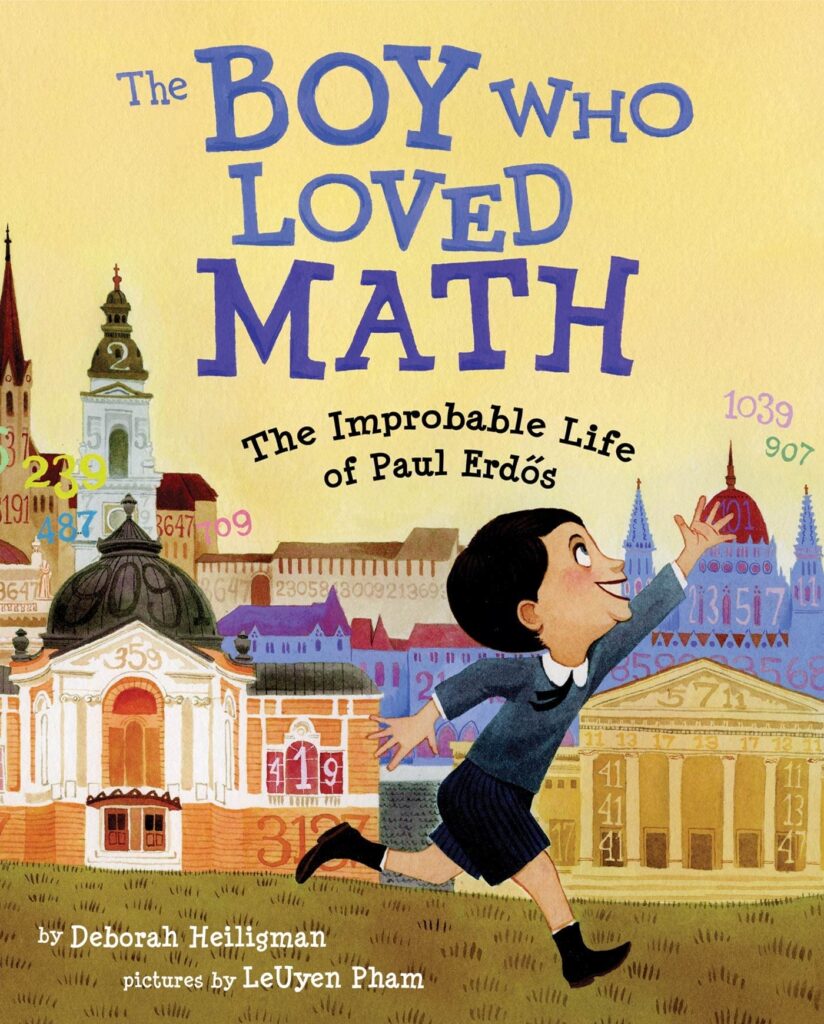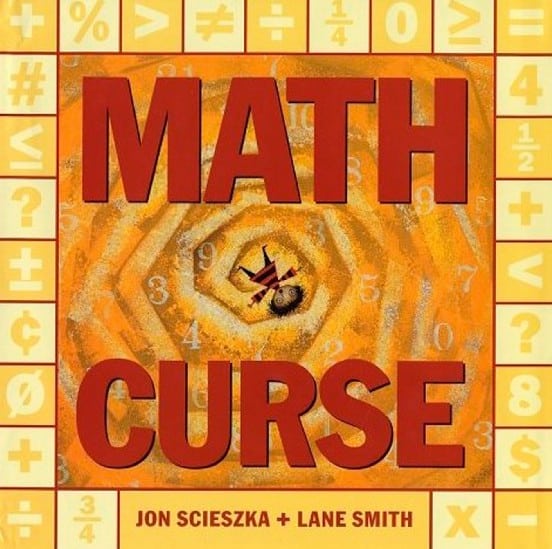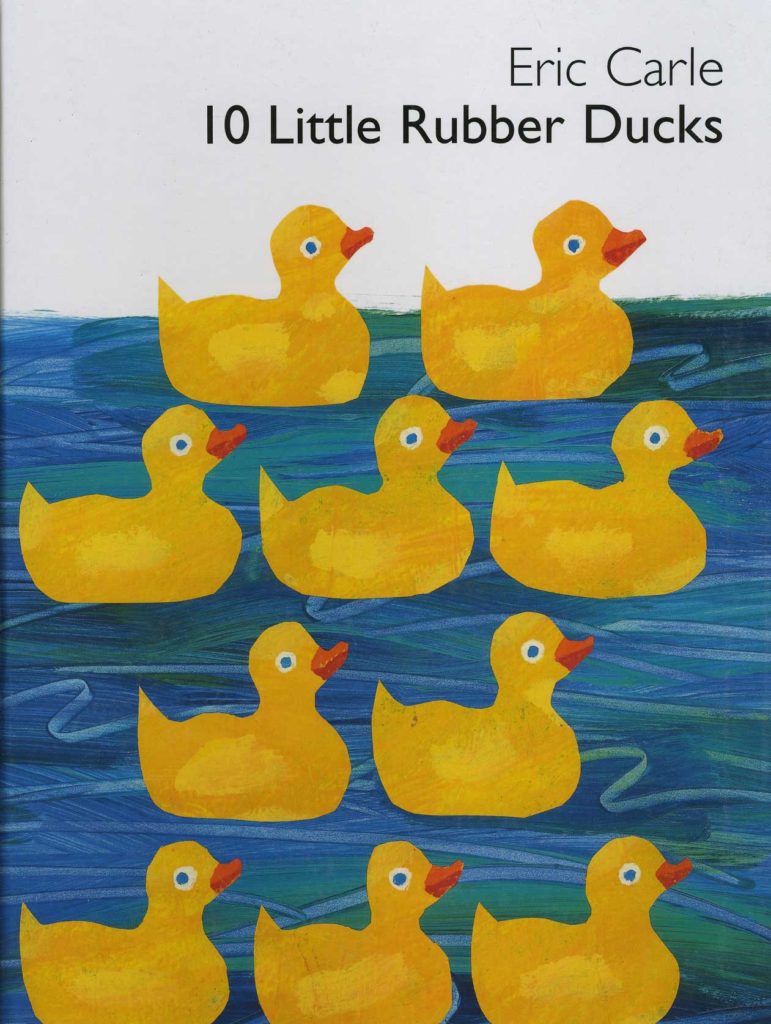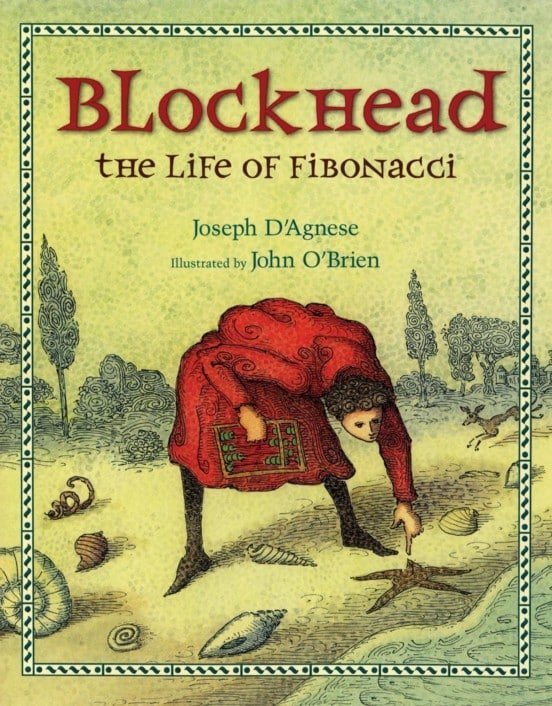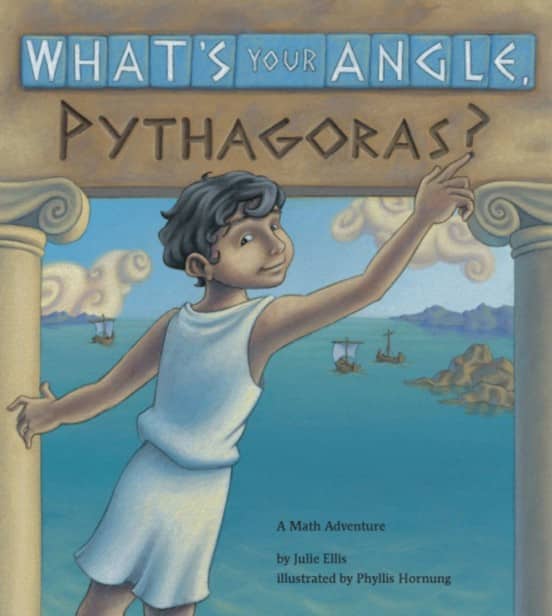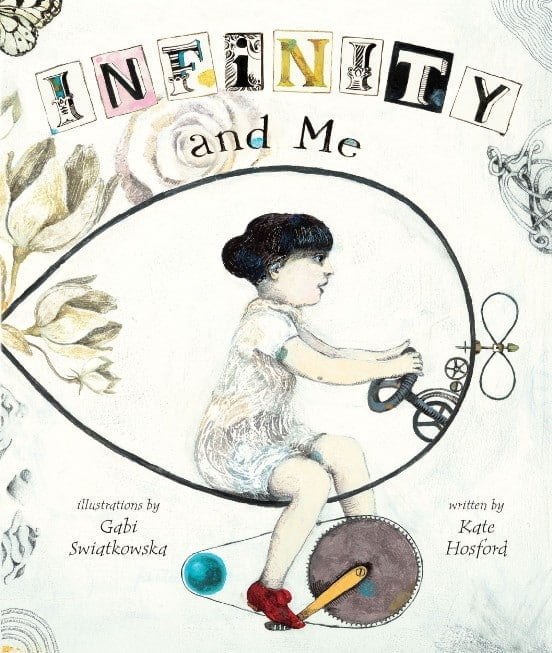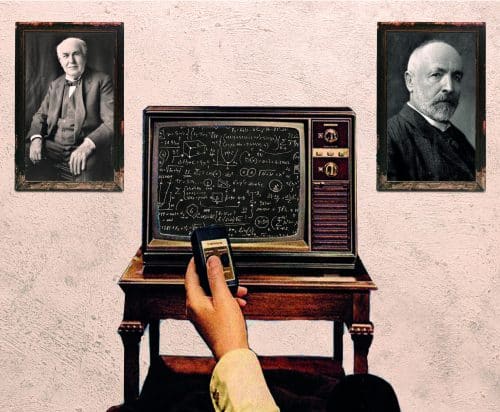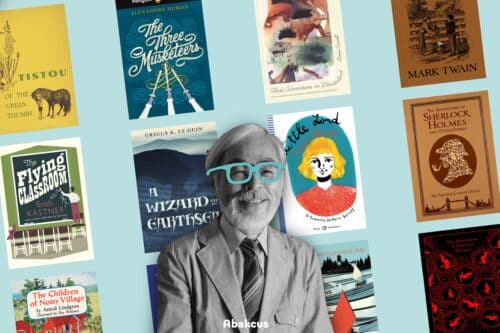You need to purchase math books for children. For a child’s education to be successful, mathematics must be a priority both now and in the future. On the other hand, when do children begin to investigate the vital subjects of mathematics? The path of curiosity, exploration, and discovery probably starts when a child tastes and feels the texture of an object they have put in their mouth for the first time.
It is because math is all around us. It’s in the patterns of nature, the shapes of our homes, and the way our devices work. Math is marvelous, but understanding mathematical concepts can be challenging for kids. But, what’s a great way of learning to love math at an early age? Of course, it’s with books! If you don’t believe me, you should check out this research, Children with More Books at Home Have Less Mental Decline When Older.
Why Math Books for Children are Important for Education?
Picture math books for children are an excellent cross-curricular tool for introducing children and students to difficult topics in mathematics. The following math books for children selection will enhance your collection while inspiring your children’s imaginations. They are filled with great stories and cool project ideas that can help lay a foundation for any mixture of STEM disciplines. In some of these math books for children, math is key to the plot; in others, the characters have a knack for math.
I hope the math books for children selected here will pique your children’s interests, teach them something new, and make mathematics more accessible.
There’s something unequivocally charming about the way Deborah Heiligman introduces young readers—and those young at heart—to the compelling story of one of history’s most prolific mathematicians in The Boy Who Loved Math. It is no small feat to transform the biographical account of Paul Erdős, a mathematician, into an accessible and engaging children’s book. Yet, with Heiligman’s nimble craftsmanship and LeUyen Pham’s vibrant illustrations, the audience is drawn into a world where numbers dance and life is a series of fascinating equations.
Paul Erdős is not your typical historical figure—or mathematician, for that matter. Widely known for his eccentricities and an incredible body of work spanning hundreds of collaborative papers, Erdős is something of a legend in the math world. This book peels back the layers of his complex persona, revealing a man driven by passion and curiosity, his love for math trumping mundane life skills like buttering bread.
What captivates about The Boy Who Loved Math is not just the whimsical portrayal of Erdős’ peculiarities but also the underlying message that brilliance can take on many forms. Erdős’ unorthodox life is a testament to individuality and finding one’s own path in the world. He was a mathematical nomad, carrying his love for numbers across continents and sharing it generously through collaboration.
Heiligman’s text is a delightful mix of simplicity and depth, encapsulating complex ideas in a way that sparks interest without overwhelming the young reader. She has a gift for pinpointing moments of humanity within a subject that can often appear daunting or sterile to the uninitiated.
Meanwhile, Pham’s illustrations do more than animate Erdős’ story—they weave numbers and symbols seamlessly into the artwork, reinforcing the book’s theme that math is everywhere. The artwork is a rich canvas, portraying a vigilant attention to detail that mirrors the intricacies of Erdős’ own mind.
However, this book is more than just a chronicle of an exceptional life; it serves as a crucial reminder of the importance of nurturing unique talents and encouraging exploration. Erdős didn’t fit the mold, and yet, or perhaps consequently, he was able to carve out a niche that had profound implications for the field of mathematics.
In conclusion, The Boy Who Loved Math is an affectionate, spirited biography of Paul Erdős. It is an inspiring tale for children and adults alike, reminding us of the beauty lying in numbers and the pursuit of knowledge. Heiligman and Pham have crafted a loving tribute not just to a man, but to mathematics itself, inviting readers to question, explore, and maybe—just maybe—fall in love with math too.
Have you ever opened your eyes to find that everything was a problem on that particular day? You still have ten things to complete, but only thirty minutes are left before your bus leaves. Is there a sufficient amount of time? You have a total of 2 pairs of pants and three shirts. Do you have at least one good outfit? Then you start to wonder why everything has to be such a problem and why it has to be that way. Why is it that five oranges always need to have two apples added to them? Why must there always be a division of 12 marbles among four children? Why is it that you can’t just have ten cookies without someone taking away 3 of them? Why? Because of a Math Curse that has been placed upon you. That is the reason. But don’t despair. This is the story of one girl’s journey to find a way to break that curse.
How does 1+1 = 288? In this hilarious tale, it doesn’t take long for a rabbit family to provide the solution. Hop along to Fibonacci’s Field and follow Lonely and Chalk Rabbit through a year as they try to cope with their rapidly expanding brood and handle a different seasonal challenge each month, from the cold of February to the wet of April and the heat of July. Throughout the year, they face a variety of conditions, including the cold in February, the rain in April, and the heat in July. This extraordinary children’s book is jam-packed with gorgeous details and novelty elements, such as a baby rabbit record book, a carrot recipe book, and a surprise pop-up ending. The book is also packed with novelty elements.
Ten adorable little rubber ducks are here to whisk you away. (A book that contains a sound chip) The rubber ducky vending machine makes a chucked-chucked-chuck sound. Little yellow ducks made of rubber started to emerge one after the other… A fresh batch of rubber ducks is packaged up, placed on a ship, and then sent on its way to be distributed to children all over the world. But when the storm hits, all ten of the little ducks are thrown into the water and carried off in ten different directions, where they encounter some wonderful and unexpected experiences along the way. An extraordinary interactive picture book, beautifully illustrated with Eric Carle’s one-of-a-kind collage-style art, invites readers to join the renowned author and illustrator of children’s books, Eric Carle, as he investigates a wide range of topics, including numbers, directions, opposites, geography, animals, and more. In addition, there is a duck with a squeaking sound chip hidden on the very last page of the book as a special bonus for the reader at the conclusion of the story.
The cosmos and our own planet Earth are realms of infinite wonder and complexity, something that Seth Fishman captures with delightful clarity in “A Hundred Billion Trillion Stars.” The book is a compelling synthesis of facts, figures, and illustrations that invites readers to ponder the incomprehensibility of the numbers defining our universe.
A key charm of the book lies in the colorful, whimsical artwork by Greenberg. The illustrations are more than mere visual treats; they are essential storytellers that make sense of the astronomical numbers presented. From the sporadic scattering of stars to the verdant sprawl of forest canopies, the art lifts the astronomical numbers off the page and into the imaginations of the readers.
Fishman addresses youngsters with an affable and engaging tone that turns potential intimidation before large figures into an irresistible curiosity. The author manages to tow the fine line between imparting wisdom and keeping the vibe light-hearted. It’s easy to forget you are learning when the voice guiding you sounds like an enthusiastic friend.
Without question, the book is a treasure trove for educators and parents eager to introduce children to STEM subjects. It’s good at igniting curiosity about math, science, and the natural world. The facts presented are thought-provoking and often spark deeper conversations about our place in the universe, conservation, and the environment.
Although the subject matter might suggest a niche audience, “A Hundred Billion Trillion Stars” is surprisingly versatile. If your child enjoyed “Ada Twist, Scientist” or the numerical adventures of “How Much Is a Million?” this book fits perfectly into that gallery of inspiring reads. It’s a potential springboard into a love for all things science and math, even for those whose passion lies elsewhere.
While many consider storytime an affair of fables and fantasies, Seth Fishman shows that there’s magic to be found in reality too. With its plethora of captivating facts, the book is a unique choice for a bedtime story. It’s an ode to the real-life enchantment that surrounds us, often overlooked in our daily lives.
In conclusion, “A Hundred Billion Trillion Stars” is a magnificent exploration of the large numbers that shape our universe. By blending education with mirthful narration and vibrant illustrations, it enthralls young readers and provokes a profound sense of awe and curiosity. This book assures a spot on the shelves of those who cherish the blend of knowledge with a dash of wonder, reminding us all of the beauty inherent in learning.
Cheryl Bardoe’s biography, “Nothing Stopped Sophie: The Story of Unshakable Mathematician Sophie Germain,” is an inspiring narrative that takes readers through the highs and lows of a pioneering woman in mathematics. This beautifully illustrated book not only tells the story of an intellectual heroine but also serves as a potent emblem of tenacity and resilience in the face of adversity.
Bardoe’s work seamlessly blends the rigors of mathematical ingenuity with the touching human story of Sophie Germain. We are transported to a time when women were unjustly kept at the sidelines of academia, and where Sophie Germain’s unwavering determination stands in stark contrast. Through meticulous research and compassionate storytelling, the author presents Sophie not just as a mathematician but, more compellingly, as a visionary who dared to defy the gender norms of her age.
The book does an exceptional job of emphasizing key themes such as perseverance, intellectual passion, and equality. Bardoe has created a book that transcends mere biography and ascends into the realm of motivational literature. The character of Sophie comes across as incredibly relatable, thereby encouraging especially young readers to pursue their dreams with vigor.
Illustrations in “Nothing Stopped Sophie” play an equally important role in engaging the reader. They serve as a visual symphony that complements Bardoe’s elegant prose, bringing 18th-century France to life and providing a colorful backdrop to Sophie’s academic endeavors.
It’s evident through every turn of the page that the author holds deep admiration for her subject. The writing style is such that it makes complex mathematical concepts accessible to laypersons, thus making science and learning appealing to everyone.
While the book primarily targets a younger demographic, it maintains a level of sophistication that will intrigue adult readers, too. It is a testimony to the universal appeal of Sophie Germain’s story as well as the universal passion for learning and exploration.
This is much more than a straightforward retelling of historical events—it is an homage to the spirit of a woman who reshaped the world of mathematics. Every school library should house a copy, every parent should consider it for story time, and every young person should draw strength from its message. Sophie Germain’s legacy, as encapsulated in the pages of Cheryl Bardoe’s book, remains an unfading beacon of inspiration.
“Nothing Stopped Sophie” is a vital addition to historical and scientific literature for children and adults alike. It’s a celebration of mind over matter, diligence over dismissal, and creativity over criticism. This book is indispensable for anyone who desires a poignant reminder of how one person’s resolve can echo through the annals of history.
In the vast expanse of literature celebrating historical figures who changed the world, “Nothing Stopped Sophie” shines brightly as a beacon of inspiration. Sophie Germain’s story resonates profoundly in our current times, reminding us that the quest for knowledge and the determination to overcome barriers is timeless.
“Leonardo Fibonacci was just a young boy living in Italy during the middle ages when he began to obsess over numbers. People often referred to him as a blockhead due to his tendency to daydream.
As Leonardo grew older and traveled the world, he was fascinated by the myriad of ways in which different nations expressed numerical values. After that, he had the epiphany that many things in nature, such as the number of petals on a flower or the spiral of a nautilus shell, appear to adhere to a particular pattern.
The young man who was made fun of for being dense had actually uncovered what would later be called the Fibonacci Sequence.”
As part of this STEAM activity, kids can put their math knowledge to the test and discover the Pythagorean Theorem at the same time as young Pythagoras. Pythagoras follows his curiosity all the way to Alexandria, where he meets a builder by the name of Neferheperhersekeper. Neferheperhersekeper is the one who teaches Pythagoras about the right angle. Pythagoras uses geometry to teach himself how to measure angles and finds out everything he needs to know about right triangles while he is working on a building. Ellis’s book is the ideal STEM/STEAM resource for introducing young readers to a fundamental mathematical equation. He does this by peppering the text with humorous puns and wordplay. A pleasurable and approachable method for provoking the question “what’s your angle?” in the minds of younger people.
How many seeds are in a pumpkin?” Mr. Tiffin asks his class as they gather around the big, medium, and small pumpkins on his desk. Robert, the biggest kid, guesses that the largest one has a million seeds; Elinor, sounding like she knows what she’s talking about, guesses the medium one has 500 seeds; and Anna, who likes even numbers better than odd ones, guesses that the little one has 22. Charlie, the smallest boy in the class, doesn’t have a guess.
Counting pumpkin seeds is a messy business, but once the slimy job is done, to everyone’s surprise, the smallest pumpkin has the most seeds! As Charlie happily exclaims, “Small things have a lot going on inside of them.”
And don’t miss the newest addition to the Mr. Tiffin series, The Dinosaur Expert!
I felt a chill run down my spine as I looked up. How many stars did the night sky contain? A million? A billion? It’s possible that the number reached infinity or even beyond. I quickly became aware of how insignificant I actually was. How am I even supposed to begin to contemplate something that is infinite in scope?
When Uma stands outside and looks up at the night sky, she can’t help but feel insignificant. She starts to ponder the concept of infinite space. Is infinity a number that continues to increase indefinitely? Is it a track that goes on forever? Is it possible that an ice cream cone could contain infinity? Uma quickly discovers that the ways in which one can think about this enormous idea may just be… infinite.


